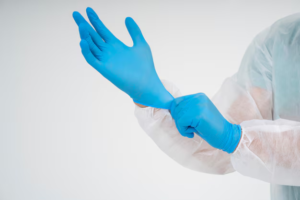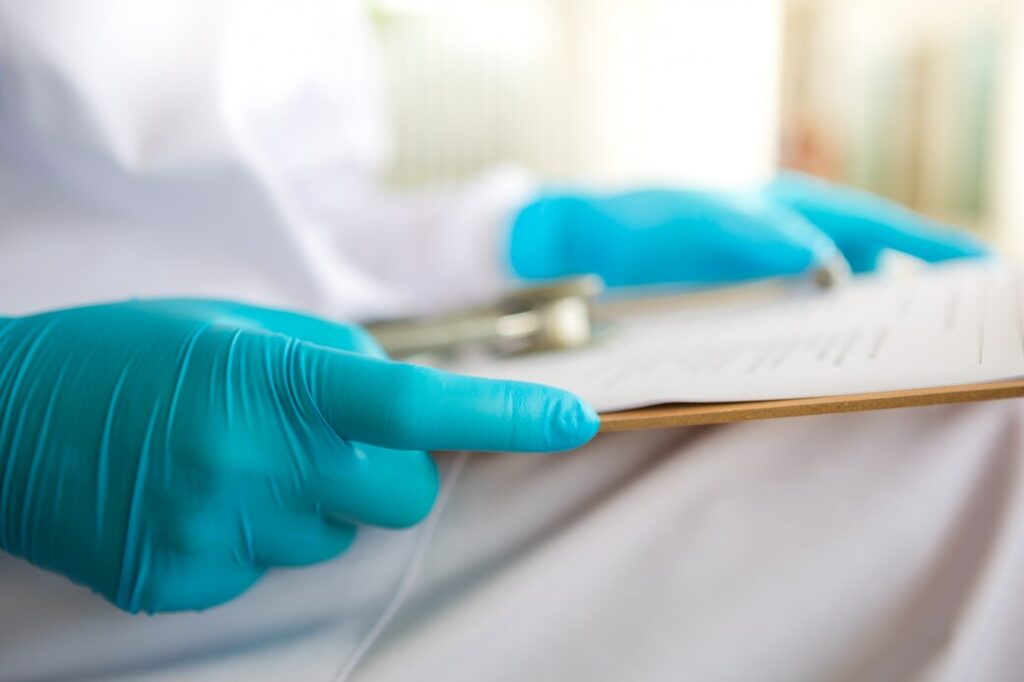

The importance of maintaining a safe and hygienic environment cannot be overstated in the medical field. Medical-grade examination gloves are crucial to ensuring patient and healthcare worker safety. These gloves act as a barrier against potential contaminants and pathogens, protecting and reducing the risk of infection transmission. This blog post will explore the significance of medical-grade examination gloves and how they contribute to maintaining a sterile and secure healthcare environment.
So, What Are Medical-Grade Examination Gloves?
Medical grade examination gloves are specially designed gloves that meet stringent quality standards and are used in various healthcare settings. These gloves are typically made from latex, nitrile, or vinyl materials. Moreover, they are available in different sizes to ensure a proper fit for individuals, offering comfort and agility while performing medical procedures. Medical-grade gloves are regulated by the Food and Drug Administration (FDA) in the United States or other relevant regulatory bodies in different countries.
Ensuring Patient and Healthcare Worker Safety: How?
Barrier Protection
One of the primary functions of medical-grade examination gloves is to act as a protective barrier. These gloves create a physical barrier between the healthcare professional’s hands and the patient, preventing direct contact with bodily fluids, microorganisms, and other potential contaminants. By reducing the risk of exposure, medical-grade gloves help safeguard patients and healthcare workers from infections and cross-contamination.
Infection Control
In healthcare settings, infections can spread rapidly without proper precautions. Medical-grade examination gloves play a crucial role in infection control. They act as a preventive measure by minimizing the transmission of pathogens between patients, healthcare workers, and surfaces. By wearing gloves, healthcare professionals can significantly reduce the risk of spreading infections like bacteria, viruses, and bloodborne pathogens.
Occupational Hazards
Healthcare workers frequently come into contact with hazardous substances and materials while handling patients or performing medical procedures. Medical-grade examination gloves provide a vital layer of protection against these occupational hazards. They shield healthcare professionals from potential exposure to chemicals, toxins, and other harmful substances commonly found in healthcare settings, ensuring their safety and well-being.
How Do You Choose the Right Gloves
- Material Selection
Different glove materials offer unique advantages, and the choice of material depends on specific requirements. Latex gloves provide excellent tactile sensitivity and elasticity but may cause allergies in some individuals. Nitrile gloves are an excellent alternative as they are hypoallergenic, puncture-resistant, and offer superior chemical resistance. Although less elastic than latex or nitrile, Vinyl gloves are a cost-effective option suitable for low-risk situations.
- Size and Fit
Proper glove sizing is crucial for ensuring maximum comfort and dexterity. Ill-fitting gloves can limit hand movements and cause discomfort during prolonged use. Selecting the appropriate glove size based on hand measurements is essential, ensuring a snug fit that allows for adequate finger movement and tactile sensitivity.
- Quality Assurance
It is vital to procure medical-grade examination gloves from reputable suppliers to ensure the highest level of safety. Look for gloves that comply with relevant regulatory standards, such as the FDA’s guidelines. Additionally, gloves should undergo rigorous testing to meet specific performance criteria, including tensile strength, elongation, and barrier integrity.
About Us
A2 Sustainable Supplies is a minority-owned business focused on keeping life sustainable by providing goods and services to improve the living environment. Our list of medical and non-medical products is extensive and our ability to provide the products at a reasonable and competitive price is key.ttis, pulvinar dapibus leo.



